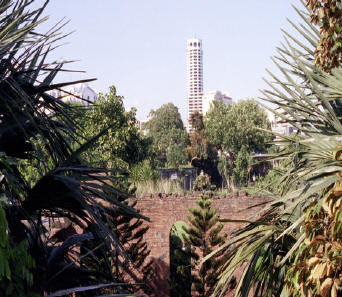|
||||||
|
History
The first inhabitants of the Philippines arrived up to 300,000 years ago, probably migrating over a land bridge from the Asian mainland. The Negrito or Aeta arrived 25,000 years ago, but they were driven back by several waves of immigrants from Indonesia, followed by maritime immigrations of Malayan people. In 1380, the Arab-taught Makdum arrived in the Sulu archipelago and began to establish what became a powerful Islamic sphere of influence over the next hundred years.
Ferdinand Magellan arrived in 1521 and claimed the archipelago for Spain. Magellan was killed by local chiefs who quite naturally disapproved of this notion. Ruy Lopez de Villalobos followed in 1543 and named the territory Filipinas after Philip II of Spain. Permanent Spanish occupation began in 1565, and by 1571 the entire country, except for the strictly Islamic Sulu archipelago, was under Spanish control. |
|
|
A Filipino independence movement grew in the 19th century and Filipinos fought on the side of the Americans in 1898 during the Spanish-American War. When the Spanish were defeated, General Aguinaldo declared the Philippines independent. The USA, however, had other plans, and promptly purchased the islands from the Spanish for US$20 million. The USA eventually recognised the Filipinos' desire for independence and Manuel L Quezon was sworn in as President of the Philippine Commonwealth in 1935 as part of a transitional phase pending full independence. Japan invaded the Philippines in 1942 brutally interrupting this process and ruled until the USA re-invaded two years later. The Philippines received full independence in 1946.
Ferdinand Marcos was elected president in 1965, declared martial law in 1972 and ruled virtually as a dictator until 1986. His regime was attacked by both communist and Muslim guerrillas, and he was accused of ballot-rigging and fraud. The assassination of prominent opposition figure Benigno Aquino in 1983 sparked massive anti-government protests. A snap election in 1986 saw the opposition parties rally around Aquino's widow, Cory. Both parties claimed victory, but Aquino was widely believed to have polled most votes. She initiated a programme of nonviolent civil unrest which resulted in Marcos fleeing the country.
Aquino re-established the democratic institutions of the country, but failed to tackle economic problems or win over the military and the powerful Filipino elite. US strategic influence in the country diminished following the 1991 Mt Pinatubo eruption which destroyed the US Clark Air Base, and after the Philippine Senate refused to ratify the lease on the Subic Bay Naval Station. Aquino survived seven coups in six years and was succeeded by her Defence Minister Fidel Ramos in 1992. Ramos attempted to revitalise the economy, attract foreign investment, cleanse corruption and expand provision of utilities.
The Philippines government and the Moro National Liberation Front signed a peace accord in September 1996 ending, formally at least, the MNLF's 24-year struggle for autonomy in Mindanao. The peace agreement foresaw the MNLF being granted considerable autonomy in many of island's provinces. Peace in the area remains elusive however following the rise of a splinter group, the militant Moro Islamic Liberation Front (MILF), which opposes the agreement. The government continues to conduct military operations in MILF-held areas in Basilan and Sulu.
In 1998, Ramos was replaced as president by the Philippines' answer to Bruce Willis, Joseph Estrada. Estrada, a former movie star elected more because of the popularity of his on-screen persona than because of any political experience, promised a lot economically and delivered it - not to the general population, however, but into his own pocket. He was impeached and brought to trial in late 2000 on charges of taking bribes from gambling syndicates, and using the proceeds to line his own dens and to build extravagant houses for his mistresses. When Estrada and his political allies tried to derail the trial by blocking prosecutors' access to his financial accounts, the people decided they'd had enough and staged mass demonstrations in the streets of Manilla. |
|


